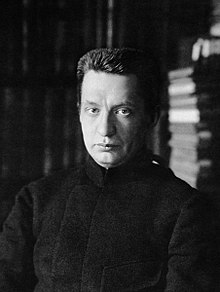Alexander Kerensky | |
|---|---|
| Александр Керенский | |
 Kerensky in 1917 | |
| Minister-Chairman of the Russian Provisional Government (Prime Minister of Russia) | |
| In office 21 July 1917 – 7 November 1917 | |
| Preceded by | Georgy Lvov |
| Succeeded by | Vladimir Lenin (as Chairman of the Council of People's Commissars) |
| Minister of War and Navy | |
| In office 18 May 1917 – 14 September 1917 [5 May – 1 September 1917 Old Style] | |
| Minister-Chairman | Georgy Lvov Himself |
| Preceded by | Alexander Guchkov |
| Minister of Justice | |
| In office 16 March 1917 – 1 May 1917 [3 March – 18 April 1917 Old Style] | |
| Minister-Chairman | Georgy Lvov |
| Preceded by | Position established[a] |
| Succeeded by | Pavel Pereverzev |
| Vice-Chairman of the Petrograd Soviet[1] | |
| Preceded by | Position established |
| Succeeded by | Matvey Skobelev |
| Personal details | |
| Born | 4 May 1881 Simbirsk, Simbirsk Governorate, Russian Empire |
| Died | 11 June 1970 (aged 89) New York City, U.S. |
| Resting place | Putney Vale Cemetery, London |
| Political party | Socialist-Revolutionary Party[2] |
| Children |
|
| Alma mater | Saint Petersburg State University |
| Profession |
|
| Signature | |
Alexander Fyodorovich Kerensky[b] (4 May [O.S. 22 April] 1881 – 11 June 1970) was a Russian lawyer and revolutionary who led the Russian Provisional Government and the short-lived Russian Republic for three months from late July to early November 1917 (N.S.).
After the February Revolution of 1917, he joined the newly formed provisional government, first as Minister of Justice, then as Minister of War, and after July as the government's second Minister-Chairman. He was the leader of the social-democratic Trudovik faction of the Socialist Revolutionary Party. Kerensky was also a vice-chairman of the Petrograd Soviet, a position that held a sizable amount of power. Kerensky became the prime minister of the Provisional Government, and his tenure was consumed with World War I. Despite mass opposition to the war, Kerensky chose to continue Russia's participation. His government cracked down on anti-war sentiment and dissent in 1917, which made his administration even more unpopular.
Kerensky remained in power until the October Revolution. This revolution saw the Bolsheviks create a government led by Vladimir Lenin, to replace Kerensky's government. Kerensky fled Russia and lived the remainder of his life in exile. He divided his time between Paris and New York City. Kerensky worked for the Hoover Institution at Stanford University, California.
Cite error: There are <ref group=lower-alpha> tags or {{efn}} templates on this page, but the references will not show without a {{reflist|group=lower-alpha}} template or {{notelist}} template (see the help page).
- ^ Сванидзе М. С.: Исторические хроники с Николаем Сванидзе. 1917 год. Александр Керенский. Retrieved 18 July 2023.
{{cite book}}:|website=ignored (help) - ^ "Aleksandr Kerensky | Facts & Biography | Britannica".